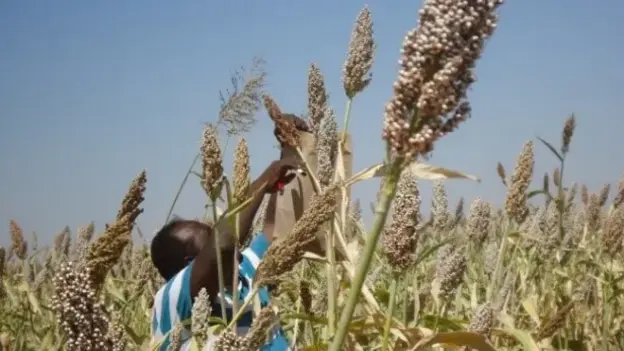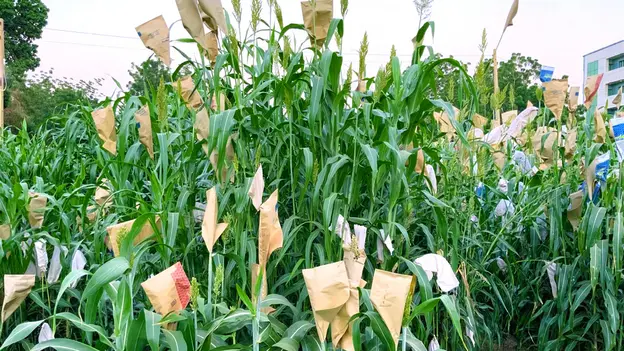Alumni Project
Biofortification of Sorghum's Wild Relatives
Agricultural Field Experiment
Micronutrient malnutrition also known as hidden hunger is a major problem in Sudan where the population depends almost entirely on single stable crops in their diets. The rural population has a predominantly sorghum-based diet. Such an unbalanced diet of only sorghum grains leads to poor health conditions: disability, impaired development, stunted mental and physical growth, and increased morbidity. The project, therefore, aims at improving the nutritional value of sorghum.
Quick Facts about Sorghum
- Sorghum is a type of grass that can grow up to 2.5 meters.
- Its grain head can contain up to 1,250 seeds, which are rich in dietary fibers and protein.
- Sorghum was first domesticated 10,000 years ago as efficient crop.
- Popped sorghum seeds taste just like popcorn.
Breeding crops with a higher nutritional value
The most sustainable solution to this micronutrient malnutrition and the most economically viable strategy is biofortification and the cultivation of crops with increased nutritional value. Selective breeding or genetic engineering is the tool of choice to obtain genes leading to higher nutrition value.
Sorghum – A plant with historical roots withstanding great drought
It is a spelt cereal from the sweet grass family and refers to a special genus of millet. The role of sorghum in Sudanese people’s life cannot be underestimated: The colloquial name for sorghum is ‛Aish’ meaning ‛life’, because it is one of the main foodstuffs in Sudan. The crop is currently cultivated in over 10 million hectares in Sudan and accounts for about 80% of the total food grain production. Moreover, the cultivation and consumption of this millet species in Sudan is historically documented and dates back 8000 years.
Sorghum grows where semi-arid to arid conditions prevail. The plant has leaves and stems that are covered with a waxy coating. This makes it capable of retaining water even during prolonged periods of drought and intense heat. Therefore, sorghum is interesting for agriculture in many Arab, African as well as European countries suffering more and more from drought.
Wild sorghum with higher genetic diversity and greater nutritiant value
Sorghum is a nutrient-rich food. However, nutrients differ across sorghum species. In general, wild species have higher nutrient content as well as greater genetic diversity than domesticated forms of sorghum.
The aim of this project is to decode the genetic code of wild Sudanese sorghum in order to be able to increase the nutrient content of the domesticated species. To improve the nutritional value, the wild sorghum germplasm might be of help.
Randomized field experiment & genome-wide association study
In this project, a genome-wide association study (GWAS) is conducted: 200 weedy and wild Sudanese sorghum accessions are screened for their grain phytic acid, micronutrients, and protein contents. The study (GWAS) is going to quantify the genomic regions and predict promising genes associated with low phytic acid, high micronutrients, and protein contents to improve the nutrition quality of domesticated sorghum. The various species of sorghum to be analysed are grown in Sudan under the supervision of AGYA member Prof. Dr. Tilal Abdelhalim. The genomic analysis is supported by AGYA alumna Prof. Dr. Salma Balazadeh and AGYA member Prof. Dr. Lilia Romdhane.
- Disciplines Involved
- Agricultural Studies, Biology
- Cooperation Partner
- Agricultural Research Corporation (ARC), Sudan
- Project Title
- Biofortification of Sorghum´s Wild Relatives – Fighting Malnutrition in Sudan
- Year
- 2021
- Funding Scheme
- Alumni Project
- Countries Involved
- Germany, Sudan, Tunisia




